
- Ethnic African American
- Artist
- Albert Fennell (4)
- Annette (4)
- Annie Lee (5)
- Byron Lars (21)
- Charles Bibbs (13)
- Dr. Lisa (5)
- Earl Jackson (3)
- Johnnie (6)
- Karen Germany (10)
- Kate Wiggs (3)
- Kaye Wiggs (3)
- Kelly Rogers (8)
- Martha Holcombe (7)
- Mary Blair (7)
- Mattel (6)
- Maynard Arnett (5)
- Patricia Rose (4)
- Shady Ladies Dolls (12)
- Thomas Blackshear (4)
- Unknown (15)
- Other (1049)
- Item Length
- Signed By
- Size
- Type
- Artist Doll (75)
- Baby Doll (18)
- Bracelet (6)
- Collectible (12)
- Doll (20)
- Doll Playset (14)
- Fashion Doll (138)
- Figure (9)
- Figurine (10)
- Hardcover (14)
- Necklace (8)
- Painting (94)
- Photograph (218)
- Play Doll (14)
- Porcelain Doll (22)
- Print (117)
- Rag & Cloth Doll (16)
- Reborn Doll (7)
- Sculpture (7)
- Textbook (42)
- Other (333)
- Unit Of Sale
Jo Cain PAINTING ANTIQUE MURAL AFRICAN AMERICAN BLACK PORTRAIT OIL LARGE 40
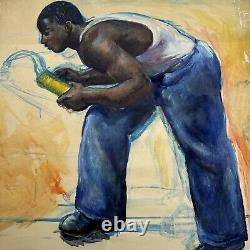
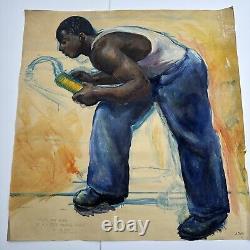
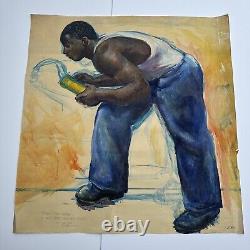
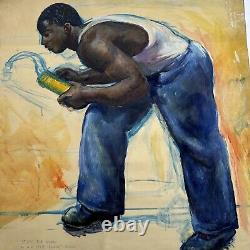
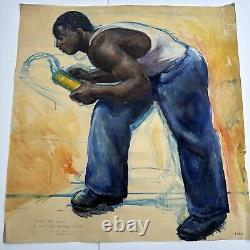
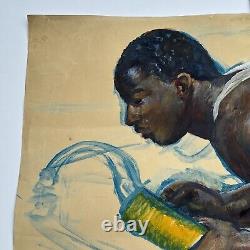
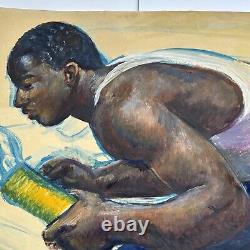
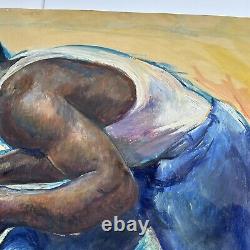

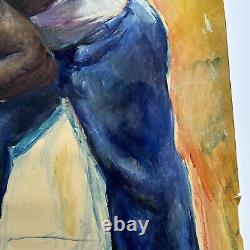
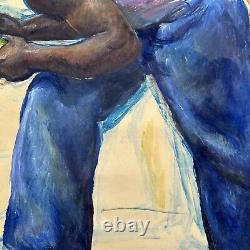
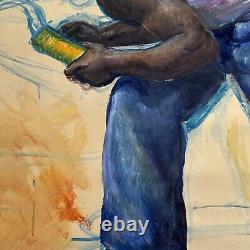
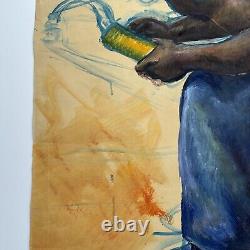
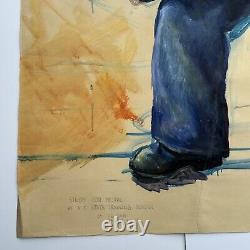
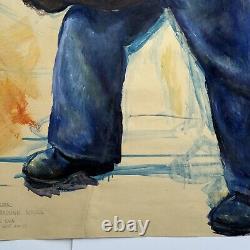




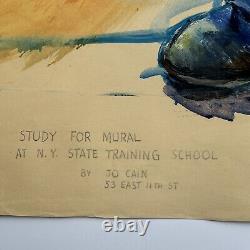
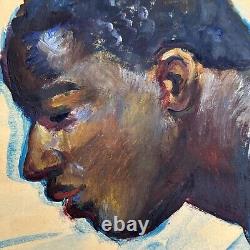





SAVE ME AS YOUR FAVORITE ART AND ANTIQUES DEALER. MURAL STUDY BY FAMOUS AND IMPORTANT AMERICAN ARTIST. IMAGE OVERALL IN GOOD SHAPE.
FROM THE BACK YOU CAN SEE IT HAS MANY RESTORATIONS. LARGE TEARS REPAIRS AND A LOT OF SMALL FINE TEARS HAVE BEEN REPAIRED. STILL MILD VISIBLE DAMAGE LIKE DISCOLRATION AND WRINKLES. ONCE FRAMED THIS IS GOING TO LOOK AMAZING. PRICE IS BASED ON AGE, QUALITY, CONDITION AND WHAT I PAID TO OWN IT. Measurements : PAINTING 38 BY 40 INCHES. Born and raised in New Orleans, Joseph Cain studied at the Chicago Academy of Art and at the Art Students League in New York.Through the years he painted a variety of subjects, but one of his favorites was the street life of his native city. Representations of New Orleans provide the subject for many of his earliest paintings, as well as late works like. Which shows the "parlor" of one of the city's more famous bordellos. Other memories of New Orleans include two views of St. Louis #3, one of its historic cemeteries.
House with Cornstalk Fence; Queen of the Mardi Gras; and Peep Show. In the 1930s, Cain's work became increasingly abstract. The apparent flatness of his compositions, together with the sense of movement achieved by the manipulation of overlapping color planes and perspective, are characteristics of a style described in 1939 as decorative expressionism. Cain's paint is usually thickly applied, and while his dancers, harlequins and ladies of the evening owe their inspiration to Matisse and other modernists, as one critic observed, his work has a fresh vision that cannot be clearly traced either to contemporary American or French schools.
His world is never dirty, mean or gray, but it is always bright and luminous (Stanley Lothrop, Boyer Galleries, New York, 1939). Biography from The Johnson Collection. Beginning at the age of sixteen, his educational journey led him first to the Art Institute of Chicago and then to the Art Students League in New York, where he was instructed by Kenneth Hayes Miller and Kimon Nicolaides. He later studied under the Abstract Expressionist Hans Hoffman.
A 1929 Carnegie Fellowship funded a year's enrollment at the Sorbonne in Paris and travel throughout Europe; Cain also received multiple Tiffany Foundation Fellowships. Using thickly applied paint, layered color planes, and multiple perspectives, Cain created paintings, including streetscapes, marine scenes, and landscapes, which were sometimes categorized as "decorative expressionism" beginning in the late 1930s. In 1932, Cain's entry to the First Biennial Exhibition of Contemporary American Painting at the Whitney Museum of American Art hung in the exhibition's entry way; other works were shown at such prestigious venues as the Museum of Modern Art, American Art, Pennsylvania Academy of the Fine Arts, National Academy of Design, and Carnegie Institute.
He also executed a monumental mural at New York State Training School where he was employed as a teacher. While living in New York during this period, Cain was an integral member of a contemporary art collective known as "The Group, " whose participants included Milton Avery, George Biddle, Robert Gwathmey, Marsden Hartley, John Marin, and many other important modernists. In 1944, Cain joined the faculty at the University of Rhode Island, establishing and chairing the art department for over two decades. Cain continued to paint long past his retirement from teaching, often returning to New Orleans subject matter in canvases that capture the bright color and festive energy of his birthplace.

